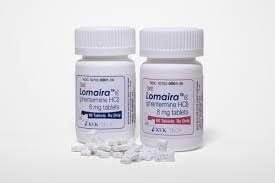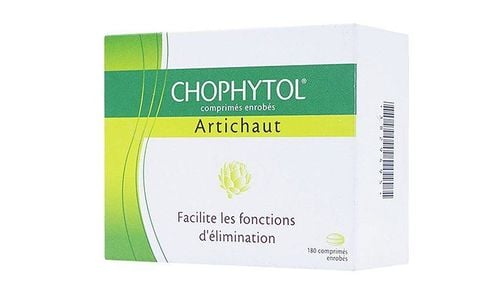This is an automatically translated article.
Gatfatit drug is made in the form of film-coated tablets, the main ingredient is Atorvastatin. The drug is used to lower blood cholesterol, prevent cardiovascular complications in the elderly.
1. What diseases does Gatfatit treat?
Gatfatit medicine 10mg has the main ingredient is Atorvastatin calcium trihydrate (Atorvastatin) 10mg. Atorvastatin is a selective and competitive inhibitor of HMG-CoA reductase, inhibiting the conversion of HMG-CoA to mevalonate - a precursor of sterols (including cholesterol). Atorvastatin is effective in reducing LDL cholesterol, apoprotein B and total cholesterol in patients with hypercholesterolemia. In addition, it also reduces VLDL cholesterol, triglycerides and increases HDL cholesterol and apolipoprotein A-1. This effect of the Atorvastatin component has been shown to reduce the risk of cardiovascular events and mortality.
Gatfatit is indicated in the following cases:
Adjunct to diet, helping to reduce total cholesterol, apolipoprotein B, LDL-cholesterol and triglycerides in patients with primary hyperlipidemia, mixed hyperlipidemia, heterozygous familial hypercholesterolemia; As an adjunct to other therapeutic measures or, when other measures are ineffective, to help lower total cholesterol and LDL-C in patients with homozygous familial hyperlipidemia; Prevention of cardiovascular complications in the elderly: Reduce the risk of myocardial infarction in hypertensive patients without clinical coronary artery disease but with more than 3 risk factors (age over 55 years, being male, diabetes) Type 2 diabetes, smoking, left ventricular hypertrophy, proteinuria, ECG abnormalities, family history of coronary artery disease before adulthood, total cholesterol/HDL-C ratio above 6 ). Gatfatit is contraindicated in the following groups of subjects:
People with hypersensitivity to Atorvastatin or other components of the drug; Patients with acute liver disease, with persistently elevated serum transaminase levels, exceeding 3 times the upper limit of normal; Pregnant and lactating women.
2. How to use and dose Gatfatit
Gatfatit is taken orally, with/without meals. Before treatment with Atorvastatin, patients should try to control high blood cholesterol status by developing an appropriate diet, losing weight (if obese) and exercising, treating health problems. strong. While taking the drug, the patient should continue to follow a cholesterol-lowering diet.
Dosage: Select the appropriate dose based on the degree of LDL-C elevation, the goal of treatment, and the patient's response. Specifically:
Usual starting dose: 10mg/time/day. Once medication has been initiated or adjusted, lipid levels should be tested within 2 to 4 weeks for appropriate correction. The maximum dose of Gatfatit is 80mg/day; Patients with hepatic impairment, renal failure, the elderly: No dose adjustment is required; Children: For pediatric patients 10 years of age and older, the starting dose is 10 mg/day, increasing to a maximum of 20 mg/day. The child's tolerability and other reactions should be regularly monitored. For children under 10 years of age, experience in using drugs is limited. If Gatfatit drug overdose, patients should be monitored liver function, blood CK levels, conduct supportive treatment.
3. Gatfatit side effects
When using Gatfatit, patients may experience some side effects such as:
Infection: Nasopharyngitis; Blood & Lymphatic System Disorders: Thrombocytopenia; Immune system disorders: Allergies, anaphylaxis; Metabolic and nutritional disorders: Hyperglycemia, hypoglycemia, anorexia, weight gain; Psychiatric disorders: Nightmares, insomnia; Nervous system disorders: Headache, dizziness, cognitive impairment (confusion, memory loss), paresthesia, peripheral neuropathy; Eye disorders: Visual disturbances, blurred vision; Respiratory, mediastinal, thoracic disorders: Sore throat, nosebleeds; Digestive disorders: Constipation, indigestion, flatulence, nausea, vomiting, diarrhea, abdominal pain, pancreatitis; Hepatobiliary disorders: Cholestasis, hepatitis or liver failure; Skin and Subcutaneous Tissue Disorders: Rash, pruritus, urticaria, alopecia, angioedema, erythema multiforme, bullous dermatitis, Stevens-Johnson syndrome, toxic epidermal necrolysis; Musculoskeletal and Connective Tissue Disorders: Myalgia, limb pain, arthralgia, muscle spasms, joint swelling, muscle fatigue, neck pain, myopathy, myositis, shoulder tendon injury, rhabdomyolysis, necrosis muscle death; Reproductive system disorders: Big owls in men; Physical disorders: Asthenia, fatigue, fever, peripheral edema, chest pain; Laboratory tests: Abnormal liver function, elevated CK, positive leukocytes in urine.
4. Be careful when using Gatfatit
Before and while using Gatfatit, patients should note:
Before taking Atorvastatin, patients should try to control hypercholesterolemia by adjusting diet, being active, exercising. exercise and actively lose weight if obese; Liver function tests should be performed prior to initiating therapy with Gatfatit and periodically thereafter approximately every 4 weeks; Patients with elevated ALT and AST should be monitored until these values return to normal. If the concentration of these enzymes increases above 3 times the upper limit of normal and persists, the dose should be reduced or Gatfatit drug should be discontinued; Use caution when using Gatfatit in people who drink a lot of alcohol or have a history of liver disease; Atorvastatin should be used with caution for the prevention of stroke risk in patients without coronary heart disease, recent stroke or transient ischemic attack; Atorvastatin can cause myositis, myalgia, myopathy, and even lead to life-threatening rhabdomyolysis, characterized by an elevation of CK (creatine kinase) more than 10 times the upper limit of normal. globulinuria can cause renal failure. Therefore, before starting treatment, a CK test should be performed if the patient has hypothyroidism, renal failure, personal or family history of inherited muscle disorders, history of muscle toxicity with fibrate or statins, people over 70 years old, patients with SLCO1B1 polymorphism. During treatment, the patient should immediately notify the doctor if muscle pain, weakness, cramps (with or without fever) occur. CK should be measured during treatment with Atorvastatin. The drug should be discontinued if CK increases more than 5 times the upper limit of normal or symptoms of myalgia appear severe, cause daily discomfort or the patient is diagnosed, suspected of having rhabdomyolysis; The risk of rhabdomyolysis is increased if Atorvastatin is used concomitantly with drugs that may increase atorvastatin concentrations such as: Cyclosporin, clarithromycin, telithromycin, delavirdine, ketoconazole, stiripentol, voriconazole, posaconazole, itraconazole, ritonavir, atazanavir, indinavir, lopinavir , darunavir, gemfibrozil, boceprevir, niacin, erythromycin, telaprevir,... If possible, other drugs or therapies should be considered; Do not use Gatfatit during pregnancy or breastfeeding. Women of childbearing potential should use effective contraception while taking the drug, do not take the drug if pregnancy is suspected; Gatfatit medicine can cause side effects such as dizziness, headache, blurred vision, tinnitus,... If you experience these symptoms, patients should be cautious when driving or operating machinery.
5. Gatfatit drug interactions
Some drug interactions of Gatfatit include:
Strong inhibitors of CYP3A4 significantly increase the concentration of Atorvastatin (the main ingredient of Gatfatit). Therefore, the concomitant use of these drugs should be avoided. If co-administration is required, the dose of Atorvastatin should be reduced, with appropriate clinical monitoring; Moderate inhibitors of CYP3A4 may increase plasma concentrations of Atorvastatin. The risk of myopathy is increased with the combination of statins and erythromycin. Therefore, a lower dose of Atorvastatin should be used, with appropriate clinical monitoring of the patient if co-administered with moderate inhibitors of CYP3A4; Concomitant administration of Atorvastatin with inducers of CYP3A4 may result in decreased plasma concentrations of Atorvastatin. Due to the dual mechanism of interaction of rifampicin, co-administration of Atorvastatin with rifampicin is recommended; Transporter protein inhibitors (Cyclosporin) may increase Atorvastatin concentrations. If co-administration of these two drugs is imperative, the dose should be reduced and the clinical effect monitored in the patient; Co-administration of gemfibrozil/fibric acid derivatives with Atorvastatin increases the risk of rhabdomyolysis. Therefore, this is a combination that should be avoided; When multiple doses of digoxin and 10 mg of Atorvastatin were used, digoxin concentrations were slightly increased. The health of patients who are taking digoxin should be monitored; Caution should be exercised when Atorvastatin is co-administered with oral contraceptives containing ethinyl estradiol or norethindrone because the effects of ethinyl estradiol and norethindrone may be potentiated. During the course of using Gatfatit, the patient should follow the doctor's instructions and have a reasonable diet, appropriate exercise and sports.
Please dial HOTLINE for more information or register for an appointment HERE. Download MyVinmec app to make appointments faster and to manage your bookings easily.













